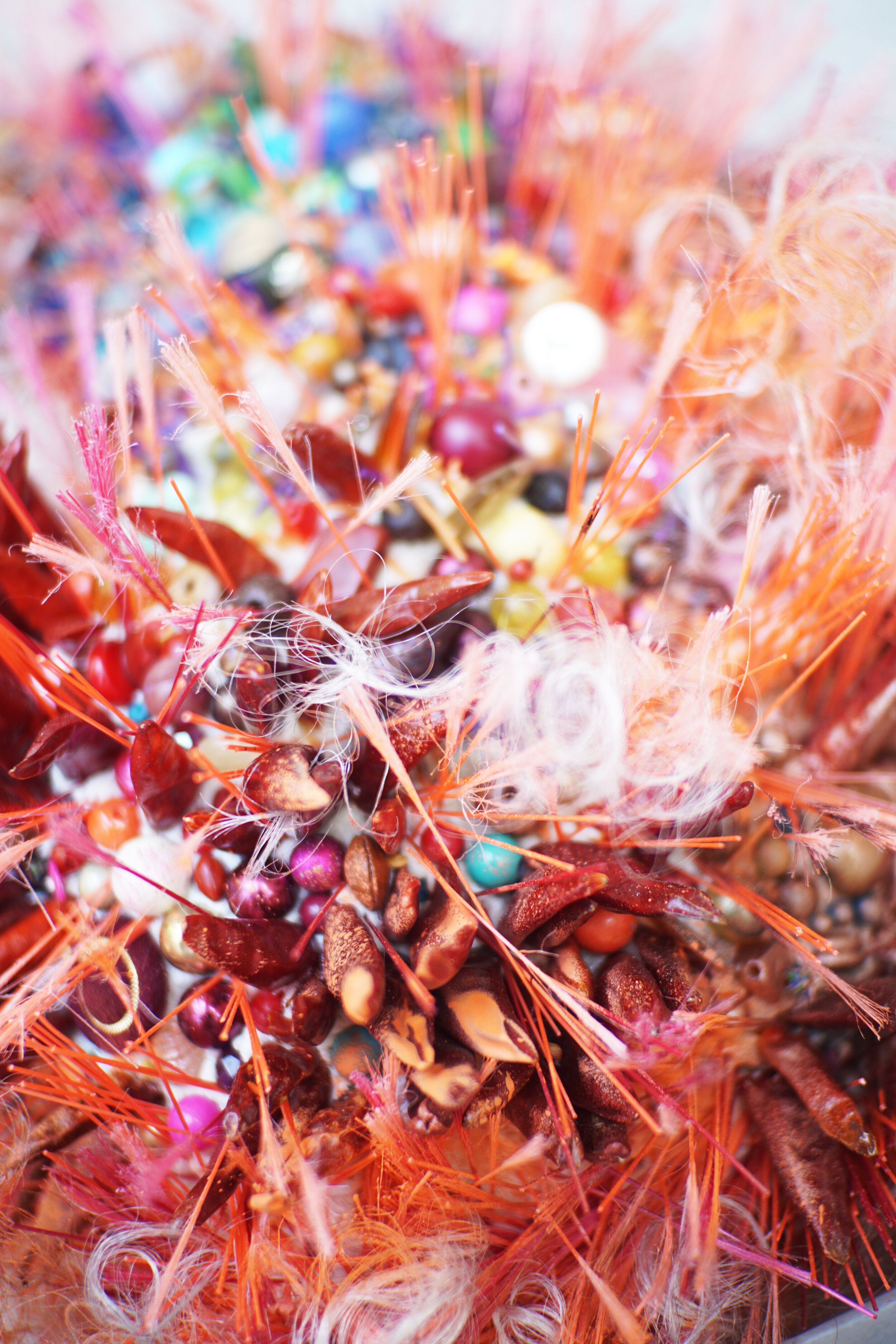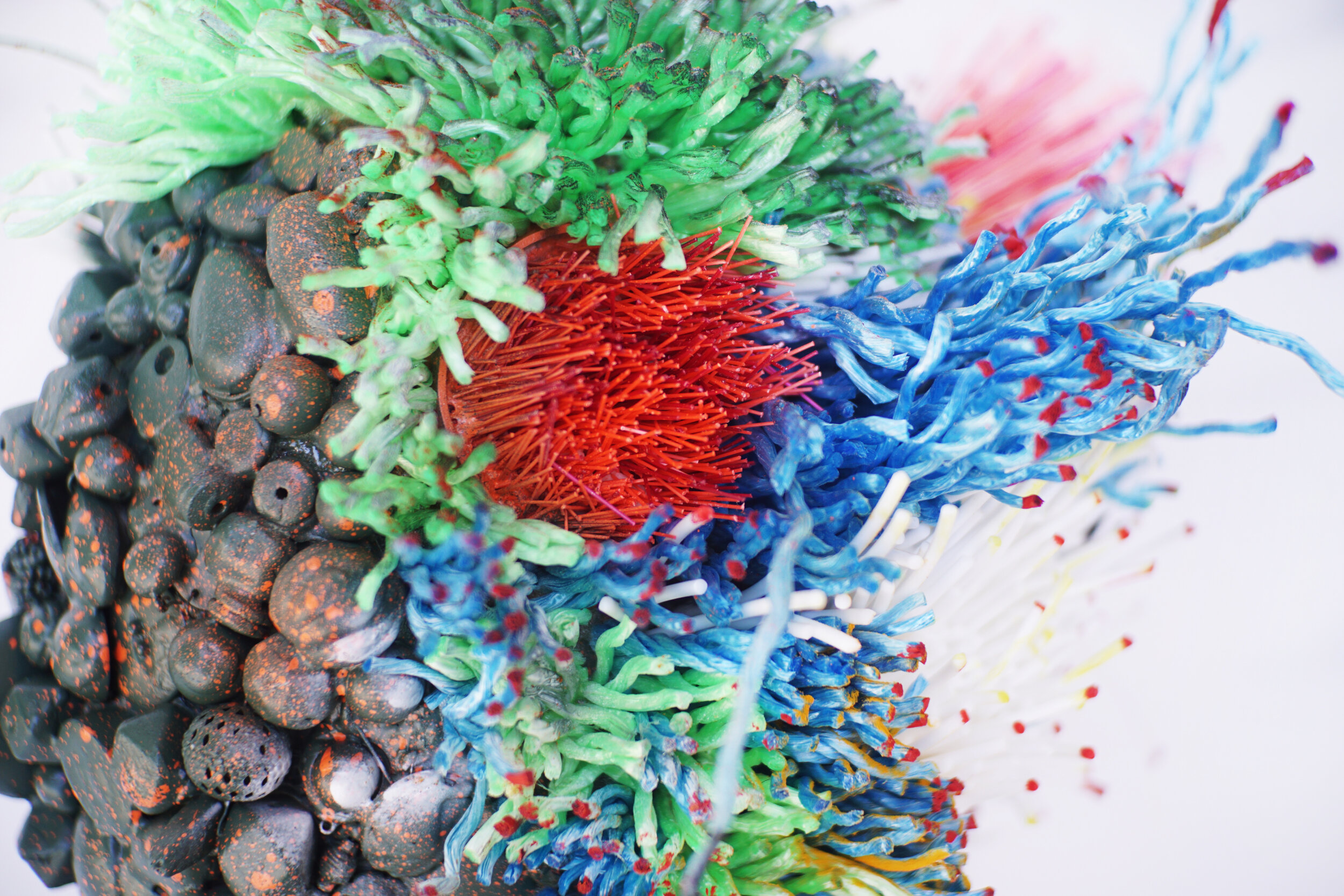Scratching the (Sur)Face of the Anthropocene
Lena Pozdnyakova and Eldar Tagi
“The origin of what Semper calls the "drive for decoration" (Verzierungstrieb)…lies not in empathetic self-contentment and pleasure but in the painful stretching of the body to limits that lie beyond its normative periphery.”
“Every man-made structure is essentially an ornament in its capacity to diagram and symbolically connote analogical relations with the cosmos.”
Throughout history, we have expressed our relationship with the surrounding world through formal language and abstraction, integrated into daily life. Traditionally, these reflections often take the form of repetitive patterns on adornments: ornamented masks; detailed totems; tattooed skins. Both Semper and later Ruskin suggest these forms of complex reflections were appropriated into architectural language. In the second half of the 20th century, John Hejduk explicitly revisited the concept of totemic objects. His Architectural Masques, often deprived of direct function but loaded with political undertones, were undoubtedly informed by the Court Stuart’s Masques, which incorporated mediums of sound and performance and took the form of an event. Hejduk’s own Masques present a poetic narrative and elements of movement through an abstract form.
Weaving together these threads of architectural practice as an apparatus to address our temporal position in the world, alongside the media-specific relationship of architecture and experience, this project simulates the new, multilayered materiality of an architectural Masque in the age of the Anthropocene. In the new model, the material surface of a totemic object becomes a multi-sensory experience that occupies both physical and virtual domains. The project is a simulation of new materiality, where waste objects overwhelm in both digital and physical domains.
The Sur(Face) of the Anthropocene, in this scenario, is a net of hybridized and randomized connections between composite ready-mades, scraps of processed and non-compostable foods, abject material, and details from abandoned objects of mass production and consumption, acoustically amplified to expand beyond the realm of physical. When scanned into the virtual world, the composite surface becomes both an extension of the object and an independent immersive experience in virtual space. While each individually found object and, by extension, sound object within the net retains its own identity, the surface as a whole clashes into one submerged skin of the “formless” and “abjected” adornment - at once diverse, colorful, playful, noisy, and abstract.
Considering the embedded abstraction that the concept of the Anthropocene presents to us, both in scale and long-term effects, one may refer to Bataille's argument on the concept of the Formless as a durational process. In this case, he views the object as devoid of symbolic value, and rather places the Informe in the “mode of operation.” The proposed skin of the Anthropocene, therefore, is “not a theme, neither a substance, nor a concept.” We perceive it as a mode of change. The skin becomes “scatalogical,” located on the slippage and devoid of form and content. Within this reading, the conceptual framework disseminates and abstraction prevails once more.
Durational perception also unfolds itself in the sensory experience of associated soundscapes. Examining sound through the prism of Bataille’s Informe, one may apply the idea of reduced listening to the process of perception of the proposed environments. Pierre Schaeffer, one of the key figures responsible for the emergence and theoritization of musique concrète, suggests that this particular mode of listening is the key to perception of abstraction. To Schafferian, sound object is “any sound phenomena or event perceived as a whole, a coherent entity, and heard by means of a reduced listening which targets it for itself, independently of the origin and meaning”. Noise pollution, field recordings of the current urban sprawl, scratching of the actual material, and echoes of imaginary digitized fauna which once populated the composite surface of the Anthropocene and now occupy the Masque, left to decompose - together become part of our own perception of projected environments.
Lena Pozdnyakova is an alumna of the Design Theory and Pedagogy program at the Southern California Institute of Architecture in Los Angeles. She earned a Bachelor in Architecture Degree from Sheffield University and a Masters in Architecture from DIA University of Applied Sciences. Currently she holds a position of Project Coordinator at xLAB think tank at AUD UCLA.
Lena has previously worked in UrbanDATA Architectural and Urban Design Bureau (Shanghai) and in 3Gatti Architectural Office (Shanghai). Deciding to go further into multimedia practice, she became part of the2vvo practice, a project for interdisciplinary research. Since 2014 she has exhibited works at Bauhausfest, Unsound and CTM Festivals. In 2014, she received Robert Oxman Prize, and in 2016 as part of the2vvo, Independent Projects Award by CEC Artslink.
Eldar Tagi is an independent composer of electronic music, sound artist, and improviser originally from Almaty, Kazakhstan, currently residing and practicing in Los Angeles, CA. Noise, chaos, and feedback are prominent elements in the Tagi’s compositional and installation works, often interweaving with soundscapes of natural environments. He is a part of the cross-media duo the2vvo, which often explores the complicated dynamics between architecture and sound through recordings, acoustic sculptures, and live audio-visual performances. Since 2014, as part of the2vvo duo, he has exhibited works at Bauhausfest, Perpetual Dune, Soundpedro, Unsound and CTM Festivals. In 2016, together with Lena Pozdnyakova, he has received Independent Projects Award by CEC Artslink. Music of the2vvo was released by the Aetherial Records, tape imprints Klammklang and Shalash. Additionally, there were several releases of live sets and podcasts by Silhouette Tapes, Frequency Asia and Radar Radio's "New East" show.





